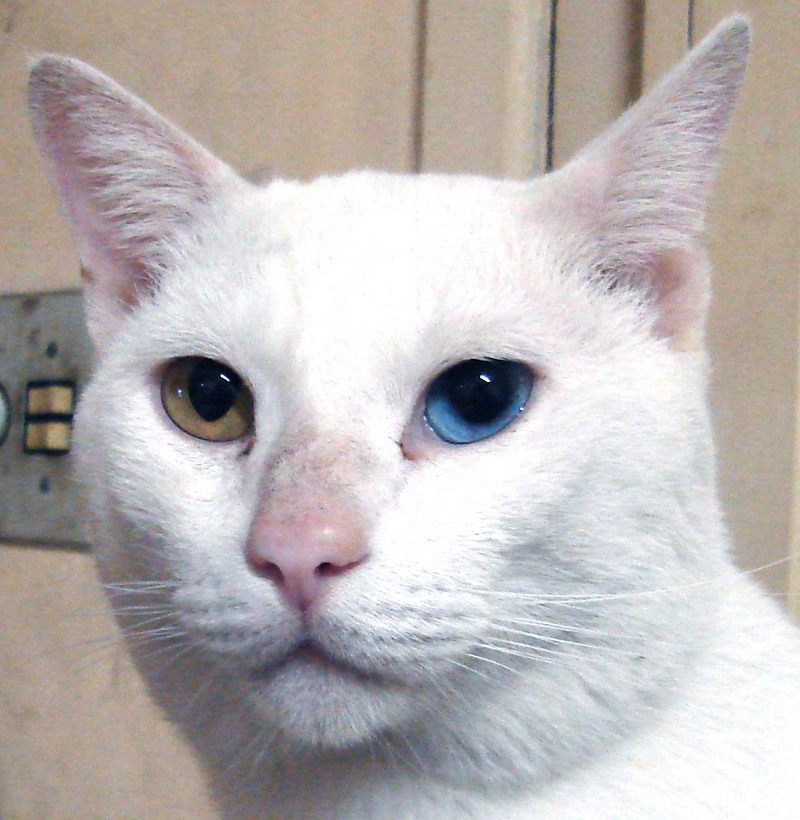Odd-eyed Cat - Wiki Odd-eyed cat
From Wikipedia, the free encyclopedia
[Photo] Brazilian odd-eyed white cat "Shiro". Brazilian Odd-eyed cat, Shiro. Date August 1, 2007. Author Akihisa Motoki
An odd-eyed cat is a cat with one blue eye and one green, orange or yellow eye. It is a feline form of heterochromia. The condition most commonly affects white colored cats but can be found in a cat of any color, as long is it possesses the white spotting gene.
Cause
The odd-eyed coloring is caused when either the dominant white gene (which masks any other color genes and turns a cat completely white) or the white spotting gene (which is the gene responsible for bicolor and tuxedo cats) prevents pigment granules from reaching one eye during development, resulting in a cat with one blue eye and one green, orange or yellow eye. This rare eye coloring is most commonly found in white cats, although it can be found in any colored cat in which the white spotting gene is present.
Kittens
As all cats are blue-eyed as kittens, the differences in an odd-eyed kitten's eye color might not be noticeable save upon close inspection. Odd-eyed kittens have a different shade of blue in one eye. The color of the odd eye changes over a period of months, for example, from blue to green to yellow, until it reaches its final, adult color.
Cultural reactions and folklore
In 1917, the government of Turkey, in conjunction with the Ankara Zoo, began a meticulous breeding program to preserve and protect pure white Turkish Angora cats with blue and amber eyes, a program that continues today, as they are considered a national treasure. The zoo specifically prized the odd-eyed Angoras which had one blue eye and one amber eye, as the Turkish folklore suggests that "the eyes must be as green as the lake and as blue as the sky". Mustafa Kemal Ataturk, who founded the modern Republic of Turkey in 1923, declared that his successor would be bitten on the ankle by an odd-eyed white cat. This prediction dramatically increased the interest in odd-eyed white cats in Turkey. Muhammad's pet Angora, Muezza, was reputed to be an odd-eyed cat.
In Japan, odd-eyed Japanese Bobtails are very popular and can carry a high price tag.
Deafness in odd-eyed white cats
There is a common misconception that all odd-eyed white cats are born deaf in one ear. This is not true, as about 60 - 70% of odd-eyed white cats can hear. About 10 - 20% of normal-eyed white cats are born deaf or become deaf as part of the feline aging process. White cats with one or two blue eyes do, however, have a higher incidence of genetic deafness, with the white gene occasionally causing the degeneration of the cochlea, beginning a few days after birth.
http://en.wikipedia.org/wiki/Odd-eyed_cat
| The text in this page is based on the copyrighted Wikipedia article shown in above URL. It is used under the GNU Free Documentation License. You may redistribute it, verbatim or modified, providing that you comply with the terms of the GFDL. |
